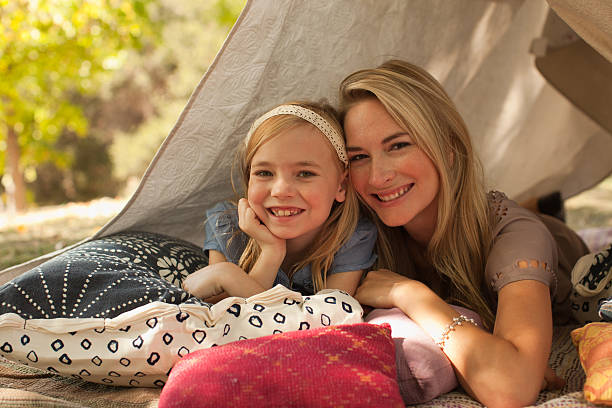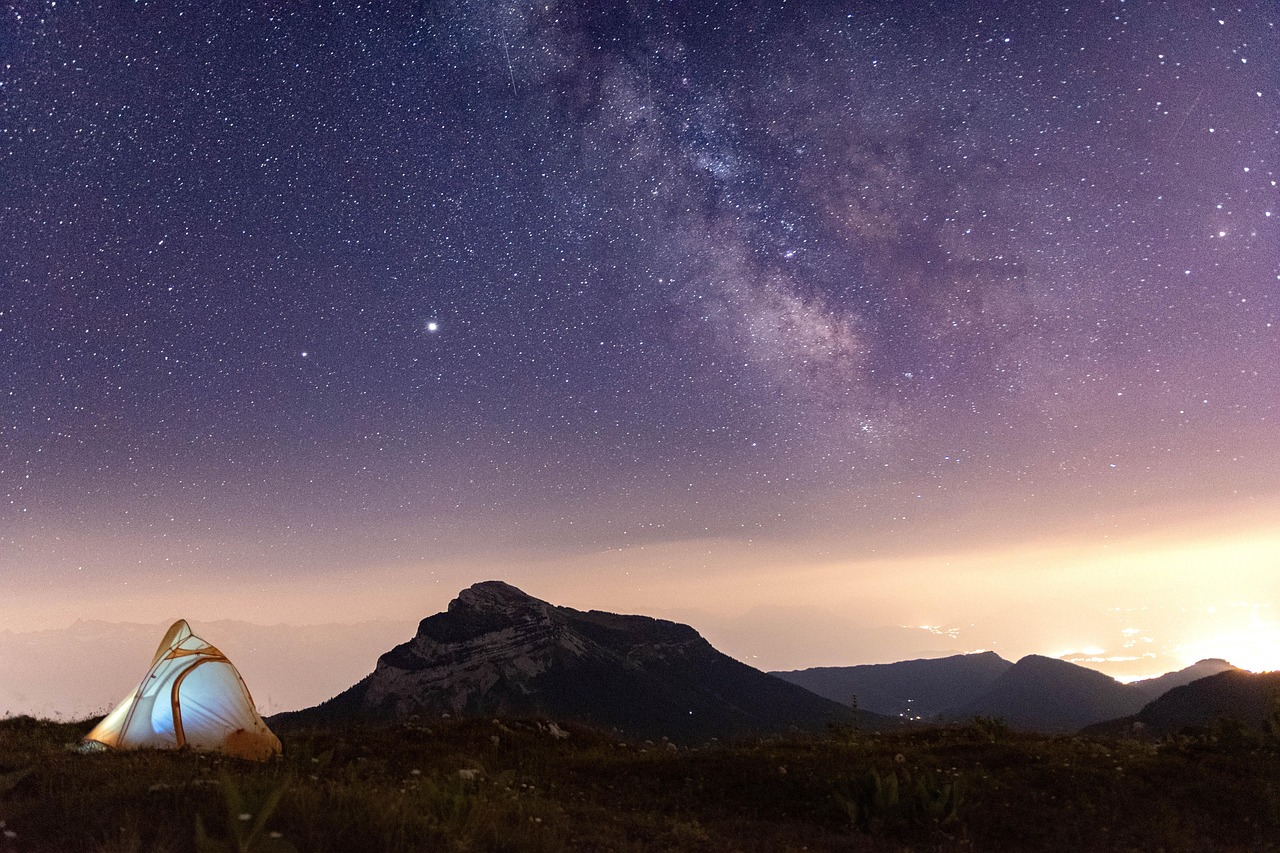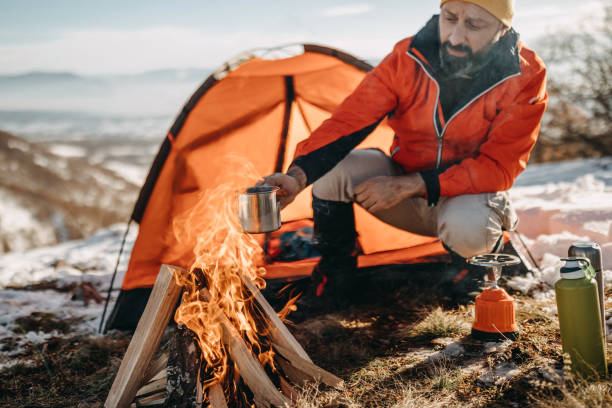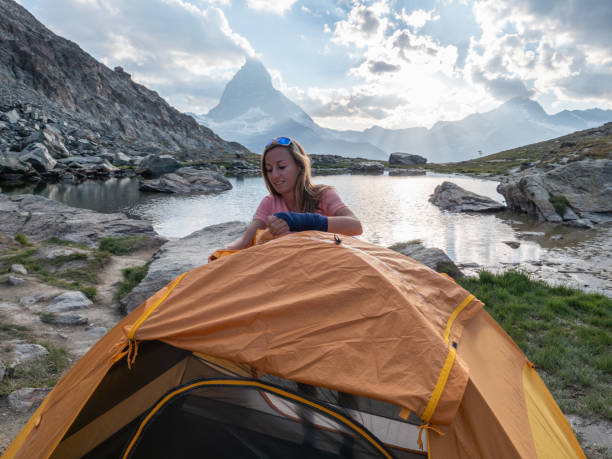There’s something sacred about sleeping under the stars—until your tent leaks, collapses in the wind, or turns into a sauna at sunrise. Trust us, we’ve been there. That’s why we decided to put some of the best Eureka tents to the test on real trips, in real conditions—from misty mountain tops to breezy lakesides and everything in between. Whether you’re a solo hiker, a family of four, or a weekend warrior, Eureka has a tent that fits your style.
Over the years, we’ve pitched countless tents in every type of terrain imaginable. But Eureka always seems to strike that sweet spot between smart design and rock-solid reliability. In this post, we’re walking you through our seven favorite Eureka tents—each one road-tested, rain-drenched, wind-whipped, and (most importantly) nap-approved. If you’re looking for that perfect mix of comfort, ventilation, weather protection, and “heck yeah, we’re camping again next weekend,” this list is for you. Grab your coffee, pull up your camping chair, and let’s dig into the best eureka camping tents reviews!
Table of Contents
- Eureka! Family Camping Tent
- Eureka! Camping Tent
- Eureka! Kohana Camping Tent
- Eureka! Space Camping Tent
- Eureka! Solitaire Backpacking Tent
- Eureka! Midori Backpacking Tent
- Eureka! Tetragon Camping Tent
- Our Verdict!
- How to Choose the Best Eureka Tents for Camping
- Pick the Right Size for Your Group (and Gear)
- Look for Weather-Ready Features
- Match Setup Ease to Your Trip Type
- Which is the best brand for tents?
- How long do Eureka tents last?
- Is Eureka a good tent brand?
7
Eureka! Family Camping Tent
We took the Eureka! Family Camping Tent on a car camping trip to Mount Pisgah—perched up high along the Blue Ridge Parkway. Honestly, it felt more like setting up a mobile bedroom than a tent. With steep walls and a 7-foot peak height, we could actually stand up straight—a luxury when changing clothes or stretching after a long hike. We laid down a proper groundsheet (tip: keep it no larger than 9×9 because of the bathtub floor design) and topped the inside with a tarp for extra insulation and cleanliness. This tent gave us room to breathe—literally and figuratively.
The mesh windows kept things breezy, even when it drizzled, and the waterproof curtains added a nice bit of privacy. Setup was a breeze too—fiberglass and steel poles, corner hubs, and clip attachments made solo pitching possible (though hoisting the fly over does require a little creativity—we used the ol’ rock-in-the-pocket trick for extra reach). One big win was the E! Powerport. We ran an extension cord through it, powered a little space heater, and stayed cozy even when temps dipped into the 30s.
Available on amazon Eureka tent is built for comfort. We laid out a queen air mattress, my buddy’s dog bed, a foldable side table, and still had room to move around. Rain didn’t faze us—it held up beautifully, though a small towel at the door came in handy to mop up drips from quick entries and exits. The only gripe? The door zippers aren’t the smoothest. But once you get the hang of them, it’s no big deal. If you can snag this model—especially used—it’s a steal. It’s not just a tent. It’s a cabin in a bag.
Feel free to watch this Eureka Kohana 6 review by Little Campfires on YouTube!
Pros:
✅ Spacious interior with full standing height
✅ Great ventilation with large mesh windows
✅ Powerport access for electric hookups
Cons:
❌ Zippers on the doors can be finicky
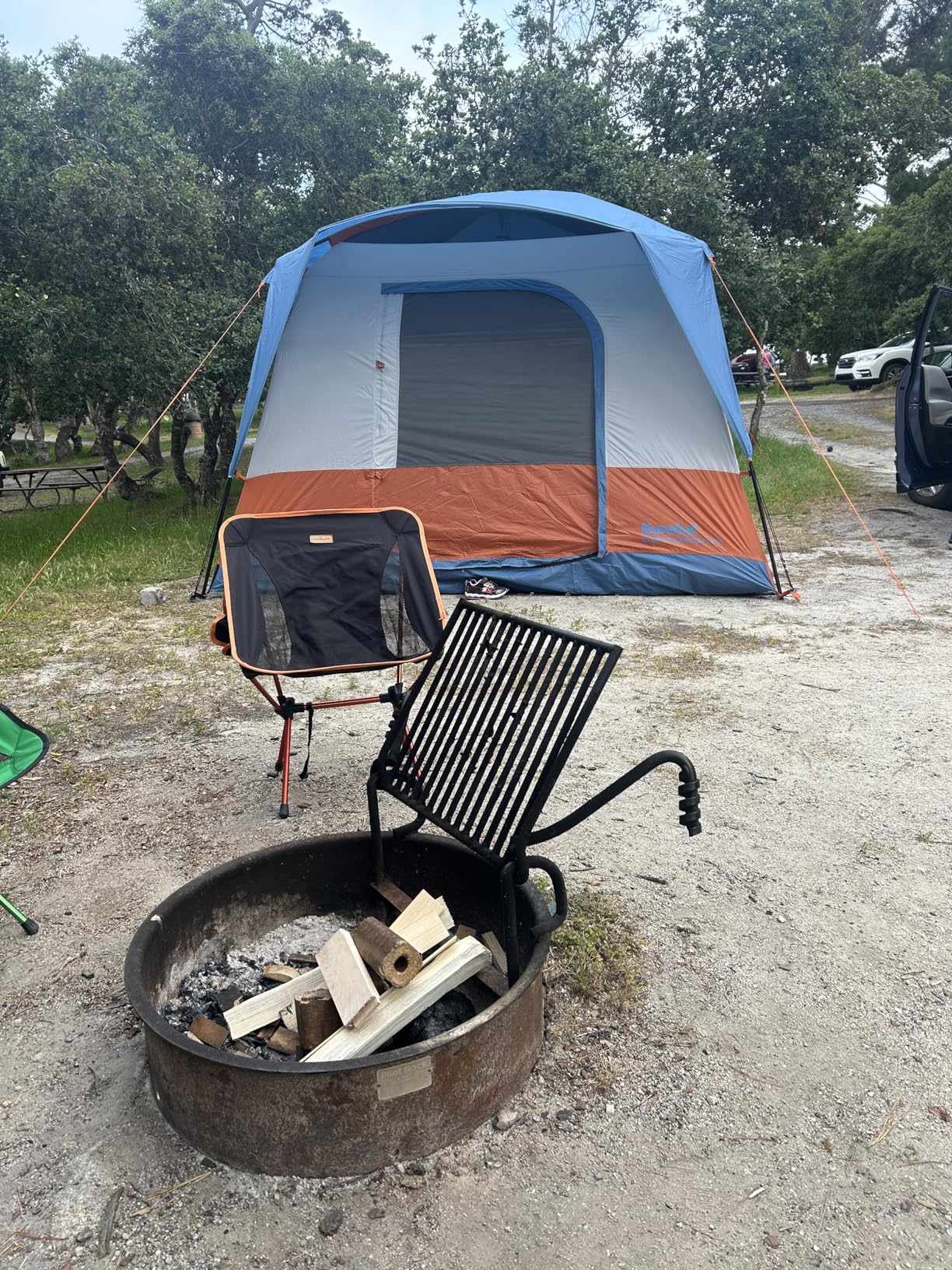
6
Eureka! Camping Tent
For a family-friendly car camping weekend with my three boys, the Eureka! Camping Tent was the perfect upgrade. My old two-man tent just wasn’t cutting it anymore. We needed space—without the headache of hauling or assembling something complicated. The NX 5’s dome design made setup refreshingly simple. Color-coded poles and a basic structure meant we were done in ten minutes flat, just in time to catch the sunset.
Inside, the 9×9 floor plan and 6-foot peak height gave us room to stretch out. We comfortably laid out sleeping bags side by side and still had space for gear near the foot. Honestly, this tent felt bigger than advertised—rare in the camping world where “5-person tent” usually means “3 humans and a dog named Max.” It ventilated well, thanks to the hooded rainfly and mesh windows. On a breezy night, it stayed cool without turning into a wind tunnel.
The small touches stood out too—two mesh storage pockets for flashlights and snacks, a lantern loop overhead, and a gear loft to stash extra layers. It’s not ultralight, but it’s surprisingly manageable in size and weight. If you’re looking for a fuss-free Eureka instant tent for casual trips with friends or kids, this one punches above its weight.
Check out this easy tent setup tutorial by Eureka! Camping on YouTube!
Pros:
✅ Quick and easy setup with dome design
✅ Good balance of space and weight
✅ Solid ventilation with mesh windows and fly hood
Cons:
❌ Fiberglass poles may not be as durable long-term
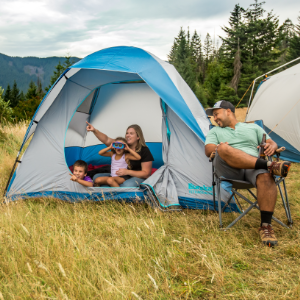
5
Eureka! Kohana Camping Tent
Best Sturdiness. We took the Eureka! Kohana Camping Tent on a multi-state road trip through the Mojave, Utah high desert, and eventually landed at a music festival in Missouri. It’s a compact, 3-season tent with surprising strength, and it became our go-to for quick setups and no-nonsense shelter. The full mesh roof and large doors meant even in the desert heat, we had plenty of airflow. And when a thunderstorm rolled through in Colorado? We zipped the fly down and stayed bone dry.
It sets up using just two main poles and clips—no sleeves to fuss with, which made our pit stops more efficient. The dual vestibules were a game changer for stashing boots, backpacks, and wet rain jackets without cluttering up the main space. It was just two of us (plus a heap of gear), and it still didn’t feel cramped.
We did double up on guy lines for extra stability in high winds, which worked wonders. The fly uses buckles instead of hooks, so teardown is a smooth process—no snagging or fumbling. At under 9 pounds packed, it’s light enough for short treks but sturdy enough to stand up to unpredictable weather. Eureka hit the sweet spot here: rugged, breathable, and compact enough to throw in the backseat and go wherever.
Pros:
✅ Excellent airflow with full mesh roof and sides
✅ Dual vestibules for gear storage
✅ Sturdy build for wind and rain
Cons:
❌ Fly setup can be tricky at first
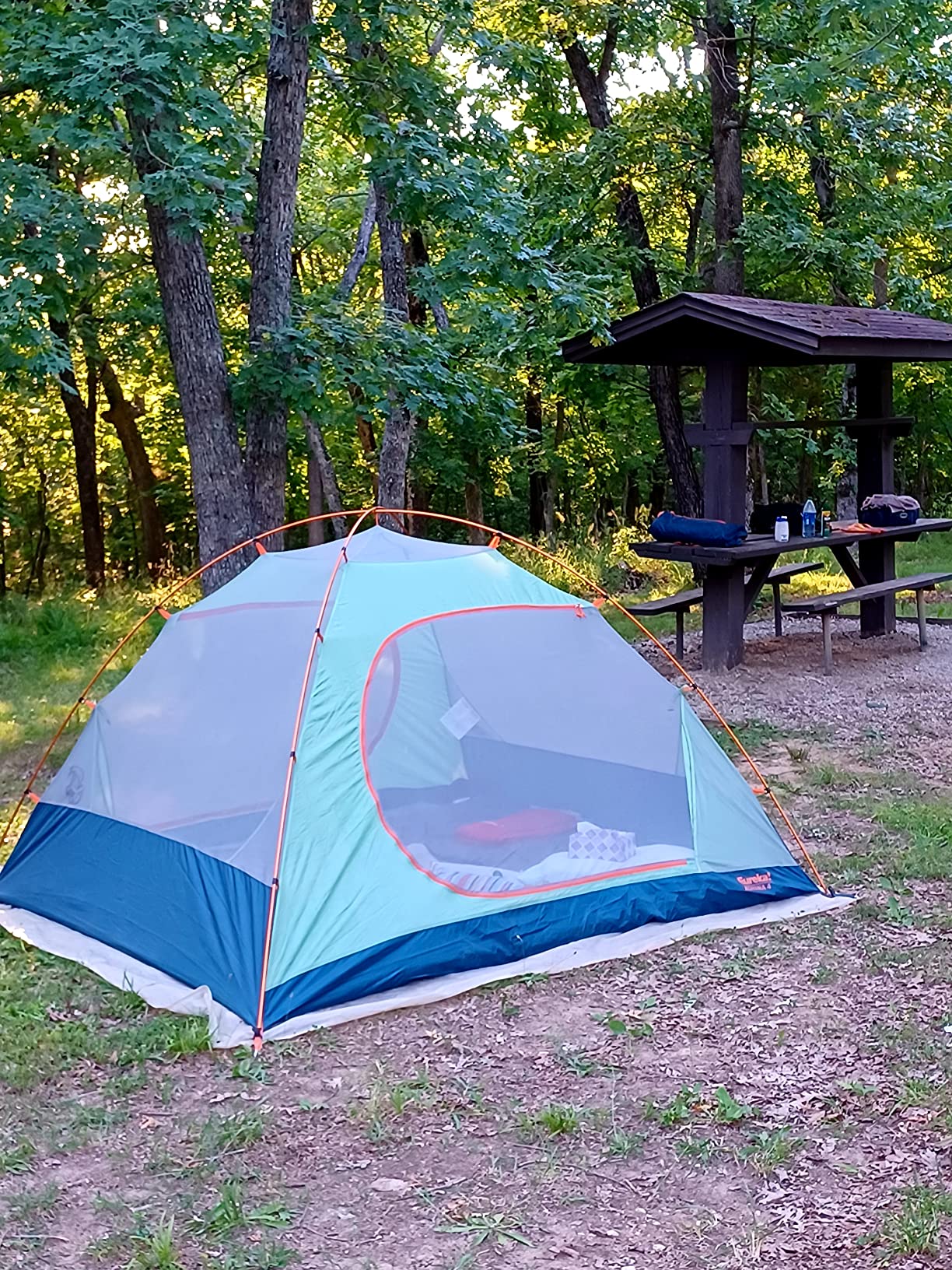
4
Eureka! Space Camping Tent
Best Value for Money. We brought the Eureka! Space Camping Tent to a lakeside campsite in Wisconsin—and honestly, it felt like cheating. This tent is enormous, with over 10×8 feet of space and a 6’4″ ceiling. We could stand up, walk around, and store all our gear without tripping over each other. It’s a dream setup for families or campers who like their elbow room.
What really impressed us was the Air Exchange System. We camped through a mix of hot days and cool nights, and we could easily adjust the vents to match the temps. The two doors—each with their own vestibule—meant we weren’t climbing over one another to get out in the middle of the night. And the full fly kept the tent warm and dry when a storm blew in on day two.
The aluminum frame is no joke either—super sturdy. We did swap out the included stakes for some heavy-duty ones, which we’d recommend if you’re camping on rocky or packed soil. The only hiccup? The light-colored fabric let in more morning light than we liked. If you’re sensitive to sunrise wake-up calls, bring an eye mask. But for sheer comfort and weather resistance, this tent is a five-star pick. Spacious, strong, and surprisingly easy to set up for its size.
Also, see our exclusive roundup of The Must-See Top Lightweight Tents for Solo Backpackers!
Pros:
✅ Huge interior with tall ceiling
✅ Adjustable vents for climate control
✅ Strong aluminum frame handles storms well
✅ Amazing Eureka 3 person backpacking tent
Cons:
❌ Light-colored fabric lets in too much morning light

3
Eureka! Solitaire Backpacking Tent
This one’s for the lone wolves out there. I took the Eureka! Solitaire Backpacking Tent on a weekend bikepacking trip along the C&O Canal Trail, and wow—talk about light and efficient. At just 2 pounds 10 ounces, it barely made a dent in my saddlebag. It’s the kind of tent that makes you appreciate how much functionality can be packed into such a small footprint.
Setup was incredibly straightforward. Two poles, a tunnel-style design, and a built-in fly that rolls back for stargazing—perfect after a long day of pedaling. Now, I won’t sugarcoat it: this is a true solo tent. It’s snug. The space is just enough for a sleeping pad and some gear near your feet. You’re not going to do a lot of yoga stretches inside, but that’s not the point. It’s made to protect you from the elements while keeping your pack as light as possible—and it does that beautifully.
The zipper-on-top entry design is unique, and while it took a little getting used to, I quickly started appreciating how well it kept rain out when I ducked in during a drizzle. The 7000 Series aluminum frame felt rock-solid even with a gusty night, and its low profile handled wind like a champ. The gear pockets weren’t exactly spacious or well-placed, but I didn’t mind—this is survival comfort, not glamping.
Compared to bivy sacks I’ve used in the past, the Solitaire gives you just enough breathing room to not feel claustrophobic. Plus, being able to roll back the fly and watch the stars before drifting off? Pure bliss. If you’re an ounce-counter who loves going deep into the backcountry alone, this tent is worth every penny.
Pros:
✅ Extremely lightweight for solo adventures
✅ Low profile great for windy conditions
✅ Built-in fly for quick protection
✅ One of the best Eureka car camping tents
Cons:
❌ Tight space—minimal room for gear or movement
2
Eureka! Midori Backpacking Tent
We brought the Eureka! Midori Backpacking Tent along for a backpacking loop in the Smoky Mountains—just me and my pack, but I wanted that extra space for gear and stretch-out room. This tent hit that sweet spot: lightweight enough for trail use, but spacious enough to not feel like I was crawling into a nylon coffin at the end of the day.
Setup was fast, even solo, and I liked that the tent didn’t try to reinvent the wheel. Two large side-opening doors made it super easy to get in and out without having to twist around awkwardly. The rear vestibule was a huge plus—it kept my boots and stove protected overnight without cluttering up the sleeping area. And the Air Exchange System? Lifesaver. I was able to tweak the venting depending on how chilly or humid it got throughout the trip.
The first night, it rained cats and dogs—typical Smokies. But I stayed bone dry. The fly held firm, and not a drop made it inside. I hung my damp clothes from the gear loops and left my headlamp in the overhead pocket, and it all dried out nicely by morning. Even when I had to pack up a soggy tent, the polyester fabric dried out quickly once I laid it out at the next stop.
Would it comfortably fit two adults? Sure—if you’re both cool with tight quarters. But for one person and all their gear, it’s a dream. Durable, reliable, and built for real trail miles. Eureka nailed it with this one—simple, smart, and ready for the elements.
P.S. You might also be interested in The Best Durable Camping Tents for Rugged Adventures!
Pros:
✅ Roomy for one, manageable for two
✅ Great ventilation and weather protection
✅ Easy setup even for beginners
Cons:
❌ Included stakes are a bit flimsy
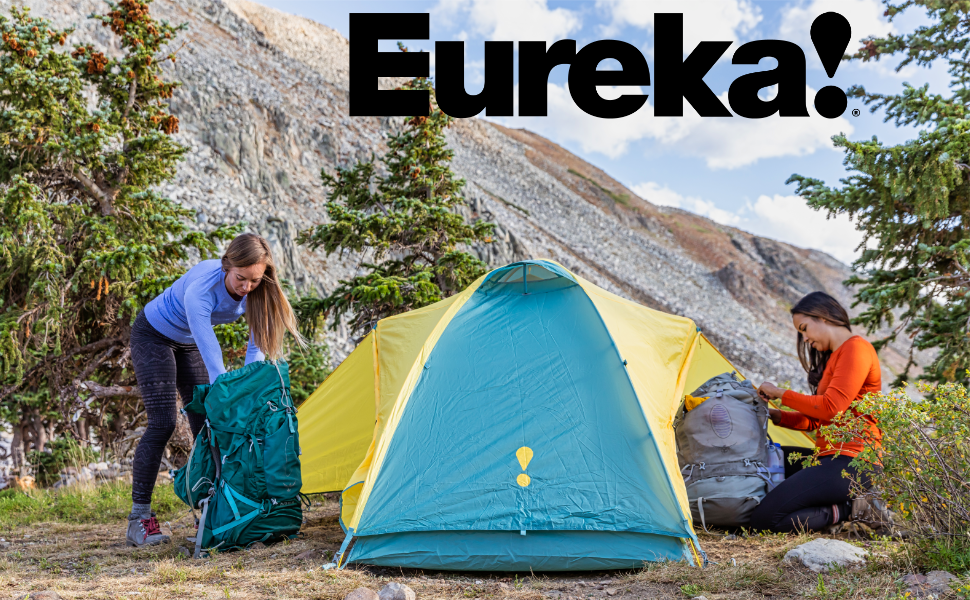
1
Eureka! Tetragon Camping Tent
Best Overall. We wrapped up our Eureka field test with the Eureka! Tetragon Camping Tent on a chill car camping trip in Shenandoah. Sometimes you don’t need bells and whistles—just a solid tent that goes up easy and lets you enjoy the outdoors. And that’s exactly what this one delivers.
The 7×7 floor space felt roomy for two of us with an air mattress and gear spread out. Three would be very cozy—think shoulder-to-shoulder—but for solo or two-person camping, it’s got plenty of elbow room. I especially appreciated the classic dome design. With just two poles and four stakes, we had it up in under five minutes flat.
The mesh windows and hooded fly worked wonders for ventilation. We left the fly off the first night since the forecast was dry, and it gave us great airflow with that almost-under-the-stars vibe. When temps dipped to the mid-50s the next night, we popped the fly on, and it kept everything warm and comfy inside.
There’s a gear loft and storage pockets—nothing fancy, but perfectly functional. We hung a little lantern from the center ring, which lit up the space nicely without getting in the way. One thing to note: there’s no vestibule space, so if it rains, your boots will need to come inside or stay in a bag. And yes, while the fly could use a bit more overhang at the door, it’s not a dealbreaker for dry-weather campers like us.
For the price, the Tetragon NX 3 is a seriously solid tent. Among the best Eureka backpacking tents for beginners, solo campers, or anyone who wants a no-stress setup for weekend getaways. It’s well-made, thoughtfully designed, and just works—what more do you need?
Pros:
✅ Fast, intuitive setup—perfect for casual campers
✅ Good headroom for dressing and gear
✅ Compact and lightweight for its size
Cons:
❌ No vestibule or rain protection at entry
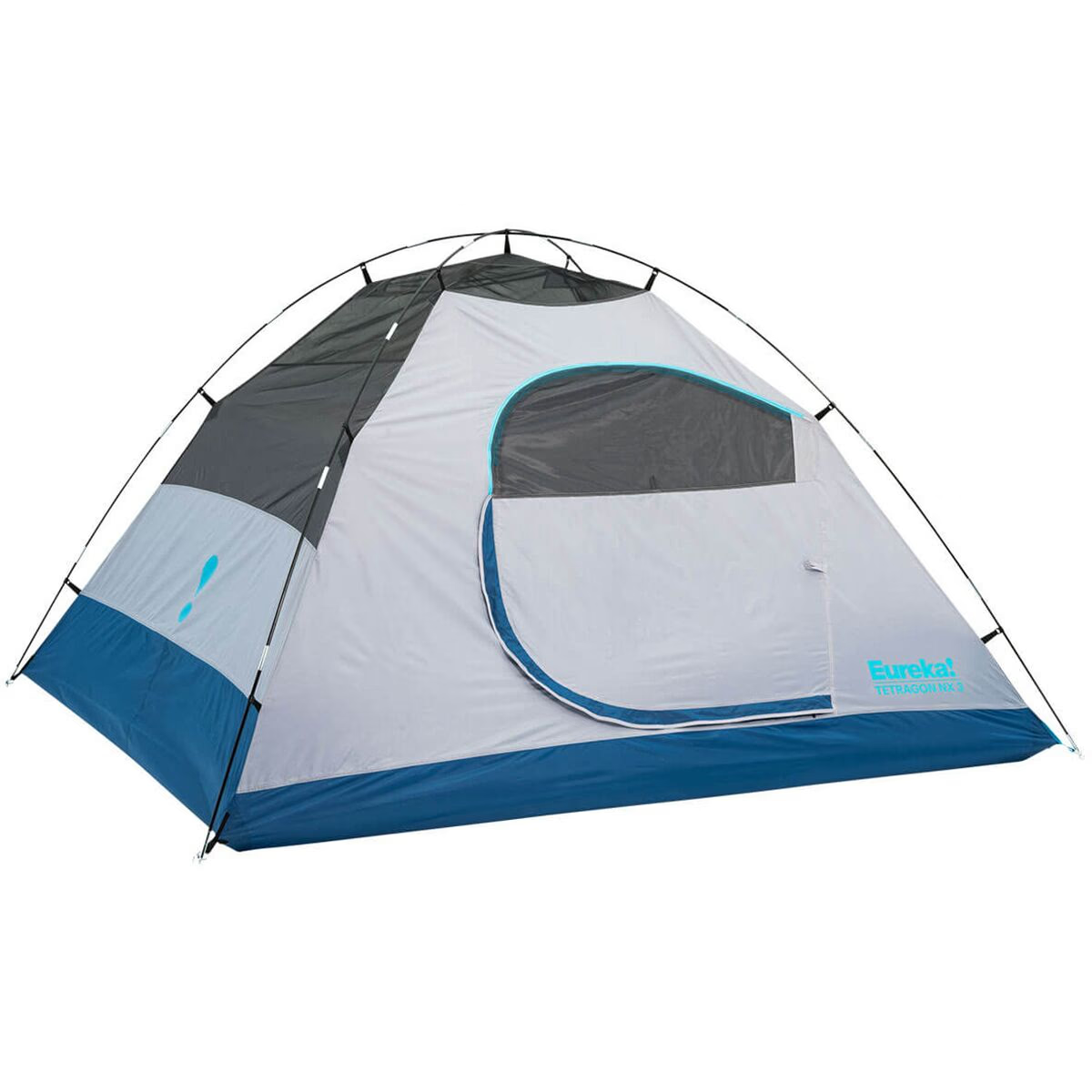
Our Verdict!
From the above roundup of the best eureka tents, the Eureka! Tetragon Camping Tent turned out to be the Best Overall option given its A1 performance, price and the overall value it offered us. Having said that, we also picked two other options that stood out in one specific feature very easily. Let’s have a look at them below!
- Best Value for Money: Eureka! Space Camping Tent
- Best Sturdiness: Eureka! Kohana Camping Tent
How to Choose the Best Eureka Tents for Camping
Choosing the best eureka camping tent comes down to matching your adventure style with the features that matter most. Whether you’re hiking deep into the backcountry or setting up at a family-friendly campground, Eureka has a tent built for the job. But how do you narrow it down? Here’s what we’ve learned after testing them all across forests, deserts, and lakesides:
🏕️ 1. Pick the Right Size for Your Group (and Gear)
Best Eureka tents come in everything from solo shelters like the Solitaire AL to spacious family domes like the Copper Canyon LX 4. But remember, tent capacity ratings are usually tight. If you’re camping with three, consider a four-person tent—it gives room for gear, stretching out, and a bit of breathing space (especially important after a muddy hike or rainy day). Bonus points for tents with vestibules—like the Kohana 4—which help keep wet boots and bags outside without losing your dry space inside.
🌧️ 2. Look for Weather-Ready Features
Eureka’s designs balance breathability and protection. For example, the Space Camp 6 has a full fly and high/low vents, perfect for adjusting airflow in humid or rainy conditions. If you’re expecting wind or storms, look for aluminum poles (like in the Midori 2 or Solitaire AL), as they hold up better than fiberglass. And always check the waterproof coating—Eureka tents typically use 1500mm-rated polyester taffeta, which has kept us dry through more than one surprise downpour.
🎒 3. Match Setup Ease to Your Trip Type
If you’re backpacking or bikepacking, setup needs to be fast and fuss-free with a Eureka instant tent—especially after a long day on the trail. The Solitaire AL and Midori 2 excel here, with compact designs and no-frills construction. For casual car camping or family trips, comfort and space may take priority, so options like the Tetragon NX 3 or Copper Canyon offer roomy interiors and intuitive pole systems. Some even feature power ports and gear lofts for that added bit of home comfort.
Which is the best brand for tents?
When it comes to the best tent brands, REI Co-op, Big Agnes, and Eureka consistently top the charts for quality, durability, and smart design. REI Co-op is a go-to for beginner to advanced campers, offering well-balanced performance and value. Big Agnes leads the ultralight game, perfect for thru-hikers and backpackers who count every ounce. But if you’re after time-tested reliability across all camping styles—backpacking, car camping, or family getaways—Eureka stands out with decades of experience, rugged construction, and practical features that actually matter out in the wild. Their tents strike a great balance between comfort, protection, and price, making them a favorite for serious campers who want gear they can count on.
How long do Eureka tents last?
Eureka tents are known for their durability, and with proper care, they can easily last 7 to 10 years or more—even longer for occasional campers. Built with quality materials like 7000 Series aluminum poles, tough polyester taffeta, and smart seam sealing, these tents are made to handle regular use in varied conditions. Longevity also depends on how you treat your gear: always dry it thoroughly before packing, use a groundsheet to protect the floor, and store it in a cool, dry place. Some campers have reported using their Eureka tents for over a decade with just minor repairs, making them a solid long-term investment for outdoor adventures.
Is Eureka a good tent brand?
Yes, Eureka is a solid and trusted tent brand, known for delivering a great balance of comfort, durability, and practical design—without overcomplicating things. They’ve been around for over 120 years, and their tents are especially popular among car campers, families, and backpackers who want reliable shelter that sets up quickly and holds up in real-world weather. From rugged aluminum frames in their backpacking models to spacious, livable interiors in their family tents, Eureka packs in thoughtful features like adjustable vents, power ports, and gear storage that make a noticeable difference on the trail or at the campsite. They’re not flashy, but they consistently get the job done—and that’s why so many campers keep going back to them.
